Ace quick missions & earn crypto rewards while gaining real-world Web3 skills. Participate Now! 🔥
Welcome to my complete "What is Cryptocurrency" beginner’s guide!
The short and easy answer to the title question is that cryptocurrencies are decentralized digital assets that you can acquire and trade on designated exchanges, such as Binance, Coinbase, or Kraken. But what exactly does that mean, and how do they work?
In this guide, I will answer all the questions you might have about cryptocurrency. I’m going to tell you when it was invented, how it works and why it’s going to be so important in the future. By the end of this guide, you’ll be able to answer the question, “what is a cryptocurrency?” for yourself.
The world of cryptocurrency moves fast, so there’s no time to waste. Let’s get started!

Did you know?
Subscribe - We publish new crypto explainer videos every week!
What is a Crypto Bridge? (Explained with Animations)
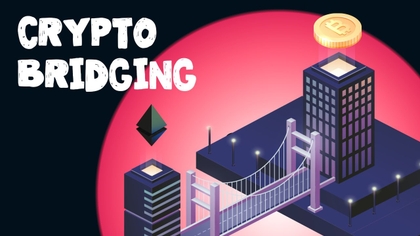

Table of Contents
- 1. How Does Cryptocurrency Work?
- 2. Crypto Definition
- 3. The Origin of Cryptocurrency
- 4. The Story of Bitcoin
- 5. What is Blockchain?
- 6. Cryptocurrency Mining
- 7. So, What is Cryptocurrency Mining For?
- 8. Using Cryptocurrencies
- 9. The Rise of Cryptocurrencies
- 10. Cryptocurrency Trading
- 11. The Global Impact of Crypto
- 12. Conclusions
How Does Cryptocurrency Work?

Don’t just pass GO, snag the limited edition Ledger Flex x Monopoly Bitcoin bundle and get a mystery BTC voucher worth up to $500. Hurry up, only available until the supply runs out!

EXCHANGE
An exchange is a business (usually a website) where you can buy, sell or trade cryptocurrencies.
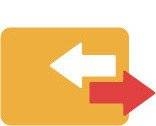
WALLETS
Cryptocurrency wallets are software programs that store public and private keys and enable users to send and receive digital currency and monitor their balance.

MINING
Miners try to solve mathematical puzzles first to place the next block on the blockchain and claim a reward.
Crypto Definition
Below is a list of seven things that every cryptocurrency must be in order for it to be called a "cryptocurrency":
- Digital: Cryptocurrency only exists on computers. There are no physical coins and no notes. There are no reserves for crypto in Fort Knox or the Bank of England!
- Decentralized: Cryptocurrencies don’t have a central computer or server. They are distributed across a network of (typically) thousands of computers. Networks without a central server are called decentralized networks. Thus, cryptos are decentralized, unlike real-world (fiat) money.
- Peer-to-Peer: Cryptocurrencies are passed from person to person online. Users don’t deal with each other through banks, PayPal or Facebook. They deal with each other directly. Banks, PayPal and Facebook are all trusted third parties. There are no trusted third parties in cryptocurrency! Note: They are called "trusted third parties" because users have to trust them with their personal information in order to use their services. For example, we trust the bank with our money, and we trust Facebook with our holiday photos!
- Pseudonymous: This means that you don’t have to give any personal information to own and use cryptocurrency. There are no overarching rules about who can own or use cryptocurrencies. It’s like posting on a website like 4Chan.
- "Trustless": No trusted third parties means that users don’t have to trust the system for it to work. Users are in complete control of their money and information at all times.
- Encrypted: Each user has special codes that stop their information from being accessed by other users. This is called cryptography, and it’s nearly impossible to hack. It’s also where the "crypto" part in the "cryptocurrency" definition comes from. Crypto means hidden. When information is hidden with cryptography, it is encrypted.
- Global: Countries have their own currencies called "fiat currencies". These are essentially government-issued money. Fiat currency examples are EUR, USD, CNY, and so on. Sending fiat currencies around the world, however, is difficult. Cryptocurrencies can be sent all over the world easily. Cryptocurrencies are currencies without borders!
This crypto definition is a great start, but you’re still a long way from truly understanding cryptocurrency. Next, I want to tell you about when cryptocurrency was created, and why. I’ll also answer the question of what is cryptocurrency trying to achieve.
The Origin of Cryptocurrency
In the early 1990s, most people were still struggling to understand the internet. However, there were some very clever folks who had already realized what a powerful tool it was.
Some of these clever folks, called cypherpunks, thought that governments and corporations had too much power over our lives. They wanted to use the internet to give the people of the world more freedom. Using cryptography, cypherpunks wanted to allow users of the internet to have more control over their money and information. As you can tell, the cypherpunks didn’t like "trusted third parties" at all!
At the top of the cypherpunks, the to-do list was digital cash. DigiCash and Cybercash were both attempts to create a digital money system. They both had some of the seven things needed to be considered a cryptocurrency, but neither had all of them. By the end of the nineties, both had failed.
The world would have to wait until 2009, before the first fully decentralized digital cash system was created. Its creator had seen the failure of the cypherpunks and thought that they could do better. Their name was Satoshi Nakamoto, and their creation was called Bitcoin.
Understanding cryptocurrency means first understanding Bitcoin.
The Story of Bitcoin
No one knows who Satoshi Nakamoto is. It could be a man, a woman or even a group of people. Satoshi Nakamoto only ever spoke on crypto forums and through emails.
In late 2008, Nakamoto published the Bitcoin whitepaper. This was a description of what Bitcoin is and how it works. It became the model for how many other cryptocurrencies were designed in the future.
On January 12, 2009, Satoshi Nakamoto made the first Bitcoin transaction. They sent 10 BTC to a coder named Hal Finney. By 2011, Satoshi Nakamoto had disappeared. What they left behind was the world’s first cryptocurrency.
Bitcoin became more popular amongst users who saw how important it could become. In April 2011, one Bitcoin was worth $1.
By December 2017, one Bitcoin was worth over $20,000! Today, the price of a single Bitcoin sways around the $30,000 mark.
INTERESTING FACT
In 2010, a programmer bought two pizzas for 10,000 BTC in one of the first real-world Bitcoin transactions. Today, 10,000 BTC is equal to roughly $370 million - a big price to pay for a couple of pizzas.
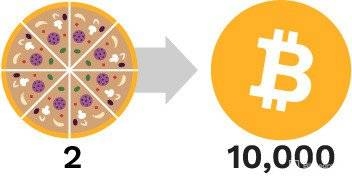
So, Bitcoin has succeeded where other digital cash systems failed. But why? What did this cryptocurrency do differently? The thing that makes cryptocurrency different from fiat currencies and other attempts at digital cash is blockchain technology. Let’s find out how it works.
What is Blockchain?
All cryptocurrencies use distributed ledger technology (DLT) to remove third parties from their systems. DLTs are shared databases where transaction information is recorded. The DLT that most cryptocurrencies use is called blockchain technology. The first blockchain was designed by Satoshi Nakamoto for Bitcoin.
A blockchain is a database of every transaction that has ever happened using a particular cryptocurrency. Groups of information called blocks are added to the database one by one and form a very long list. So, a blockchain is a linear chain of blocks! Once information is added to the blockchain, it can’t be deleted or changed. It stays on the blockchain forever, and everyone can see it.
The whole database is stored on a network of thousands of computers called nodes. New information can only be added to the blockchain if more than half of the nodes agree that it is valid and correct. This is called a consensus. The idea of a consensus is one of the big differences between cryptocurrency and normal banking.
At a normal bank, transaction data is stored inside the bank. Bank staff makes sure that no invalid transactions are made. This is called verification. Let’s use an example:
George owes $10 to both Michael and Jackson. Unfortunately, George only has $10 in his account. He decides to try to send $10 to Michael and $10 to Jackson at the same time. The bank’s staff notice that George is trying to send money that he doesn’t have. They stop the transaction from happening.
The bank stopped George from double spending, which is a kind of fraud. Banks spend millions of dollars to stop double spending from happening. What is cryptocurrency doing about double spending, and how do cryptocurrencies verify transactions? Remember, they don’t have staff, as the bank does!

Cryptocurrency transactions are verified in a process called mining. So, what is cryptocurrency mining, and how does it work?
Cryptocurrency Mining
Cryptocurrency mining might sound like something you do with a shovel and a hard hat, but it’s actually more like accounting. Miners are nodes that perform a special task that makes transactions possible. I’ll use an example to show you how it works using the Bitcoin network.
- George owes Michael 10 BTC. George announces that he is sending Michael 10 BTC to the Bitcoin network.
- Miners take the information and encrypt it. This is called hashing. To this information, they add other transaction information and hash that, too. More and more information is added and hashed until there is enough to form a block.
- The miners now race against each other to guess the encrypted code or block hash that will be given to the new block before it’s added to the blockchain. The lucky miner that guesses the right code gets to add the new block to the blockchain.
- Now, all the other nodes on the network verify the transaction information in the new block. They check the whole blockchain to make sure that the new information matches. If it does, then the new block is valid, and the winning miner can add the new block to the blockchain. This is called confirmation.
- Michael receives 10 BTC from George.
Mining cryptocurrency uses a lot of computer power, so miners are rewarded for the work they do. On the Bitcoin network, miners who confirm new blocks of information are currently rewarded with 6.25 BTC of new Bitcoin. This is why it’s called mining. Instead of mining for gold or coal, crypto miners are digging for new Bitcoin!
So, What is Cryptocurrency Mining For?
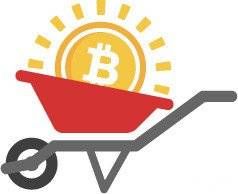
It’s the way cryptocurrency networks like Bitcoin verify and confirm new transactions. It stops double spending without the need to trust centralized accounting as banks do. Cryptocurrency blockchains aren’t secured by trust or people. They are secured by math done by computers!
For more information, check out our Blockchain Explained guide.
Now you know how blockchains and crypto mining work. Next, I’ll tell you how you can join a cryptocurrency network.
Using Cryptocurrencies
Using cryptocurrencies isn’t like using fiat money. You can’t hold cryptocurrency in your hand, and you can’t open a cryptocurrency account. Cryptocurrency only exists on the blockchain. Users access their cryptocurrency using codes called public and private keys.
It’s a bit like sending emails. If you want someone to send you an email, you tell them your email address. Well, if you want someone to send you cryptocurrency, you tell them your public key.
Now, if you want to read your emails or send an email, you need to enter your email password. This is how private keys work. Private keys are like passwords for cryptocurrency. Public keys can be seen by anyone, but private keys should only be seen by you. If there is one paramount detail you should learn from this What is Cryptocurrency guide, it’s that keeping your private keys safe is extremely important!
 Private and public keys are kept in wallets. Crypto wallets can be online, offline, software, hardware or even paper. Some can be downloaded for free, or are hosted by websites. Others are more expensive. For example, hardware wallets can cost hundreds of dollars! You should use several different kinds of wallets if you plan to own cryptocurrency, though.
Private and public keys are kept in wallets. Crypto wallets can be online, offline, software, hardware or even paper. Some can be downloaded for free, or are hosted by websites. Others are more expensive. For example, hardware wallets can cost hundreds of dollars! You should use several different kinds of wallets if you plan to own cryptocurrency, though.
Whoever has the private key owns the cryptocurrency, so don’t lose your wallets! Cryptocurrency is pseudonymous, remember? There is no way to prove your own cryptocurrency unless you have the keys to it.
I’ve told you about how the first cryptocurrency was created and how it works. I’ve also told you about how cryptocurrency is stored and used. Now, let’s look at some other cryptocurrencies that have been created since Bitcoin.
The Rise of Cryptocurrencies
Bitcoin changed the way people think about money. Thousands of other cryptocurrencies have been created since, and they all want to change the world!
Check out a few of the cryptocurrencies that have come along since Bitcoin (in order of creation date):
- Litecoin is a lot like Bitcoin, but its transactions are processed four times faster. Litecoin mining is easier than Bitcoin mining, so users with less powerful computers can become miners.
- Ethereum uses more advanced blockchain technology than Bitcoin. It’s sometimes called Blockchain 2.0. Ethereum allows its users to design and build their own decentralized applications (dApps) on its blockchain. If Bitcoin wants to replace banks, then Ethereum wants to replace everything else. Ethereum developers can build dApp versions of centralized apps like Facebook, Amazon, Twitter or even Google! The platform is becoming bigger than just a cryptocurrency. So, what is cryptocurrency when it’s not really cryptocurrency anymore? It’s Ethereum! A platform that uses blockchain technology to build and host decentralized apps.
INTERESTING FACT
Ethereum has quickly skyrocketed in value since its introduction in 2015, and it is now the 2nd largest cryptocurrency by market cap.

Would you like to know more about Ethereum? Check out our What is Ethereum guide.
- IOTA is a pretty special cryptocurrency, as it doesn’t have a blockchain! IOTA uses a DLT called the Tangle. Miners don’t confirm new transactions - users do. When a user wants to make a payment using the Tangle, they have to verify and confirm two other users' transactions first. Only then will their payment be processed. It’s like getting students to grade each other’s homework instead of the teacher doing it. The Tangle is thought to be a lot faster than Bitcoin, Litecoin and Ethereum! If you thought that was weird, check this out — IOTA isn’t even designed to be used by humans! Instead, IOTA is designed for the Internet of Things (IoT). That’s any machine with an internet connection. IOTA will help the IoT communicate with itself. IOTA actually means the Internet of Things Application. Imagine that! In the future, your driverless car could use IOTA to go to the gas station, fill up with gas and pay. All without any humans being involved.
Cryptocurrencies aren’t just for sending money without using a bank. They can do all kinds of cool things. These cryptocurrencies and many others are available to buy and sell on crypto exchanges. So, what is cryptocurrency trading?
Cryptocurrency Trading
Buying and selling cryptocurrencies has become a very big business. The total value of all the cryptocurrencies in the world is more than $1,4 trillion. You can trade online with crypto exchanges like Binance, KuCoin, and Kraken. You can also arrange to trade cryptocurrencies in person, with Peer-to-Peer sites like LocalBitcoins.
The cryptocurrency market is an exciting place. Traders can make millions and then lose it all. Cryptocurrencies are created overnight and then disappear just as fast. Many experts advise newbie traders out there to only spend what they can afford to lose. I know I sound like your grandma, but it’s true!
Crypto trading should be used as a way to support the technology, and not as a quick way to get rich!
Since you started reading this guide, you’ve been getting closer and closer to understanding cryptocurrency. There’s just one more question I’d like to answer. What is cryptocurrency going to do for the world?
The Global Impact of Crypto
Cryptocurrencies have a lot of critics. Some say that it’s all hype. Well, I have some bad news for those people. Cryptocurrency is here to stay, and it’s going to make the world a better place.
Centralized organizations have let us down.
- In 2008, banks cost taxpayers trillions of dollars and caused the world economy to fall apart.
- The credit checking agency, Equifax, lost more than 140,000,000 of its customers' personal details in 2017.
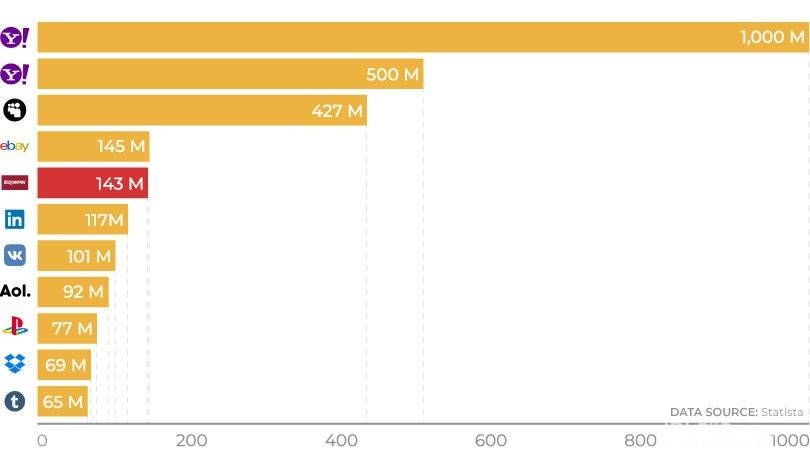
- Facebook was forced to apologize for selling its users’ personal data.
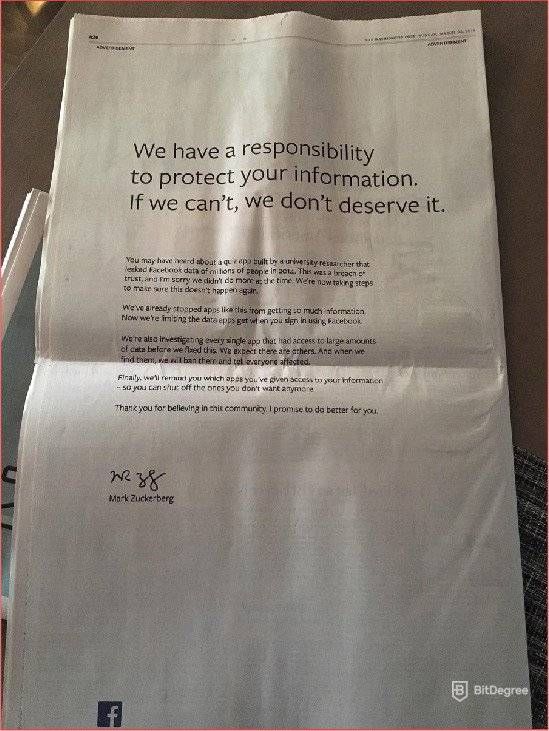
Cryptocurrencies offer the people of the world another choice.
The governments of Syria, Yemen, and Libya have all failed to protect their people from violent civil wars.
What is the cryptocurrency to the people of Syria? It’s hope. Thirty percent of UN Aid is lost to third-party corruption so UNICEF has been using Ethereum to raise money for the children of Syria.
About 2 billion people around the world don’t have bank accounts. One in ten Afghanis are unbanked, many of them women. What is the cryptocurrency to an Afghani woman? It’s freedom. Bitcoin is giving women in Afghanistan financial freedom for the first time.
Blockchain technology could be used for elections in some of the most corrupt countries in the world. What is the cryptocurrency to the people of Sudan or Myanmar? It’s a voice. Free elections could be held without fear of violence or intimidation.
Cryptocurrencies can help make the world a fairer, safer and more peaceful place for us all to live in.
Conclusions
So far, you’ve learned what cryptocurrencies are and how they work. You also know how to store them and where to trade them. However, understanding cryptocurrency is more than just understanding blockchains and mining. Understanding cryptocurrency is about understanding what those technologies can do for you.
Cryptocurrencies have the power to change our lives forever. They can help you take back control of your money and your information. Some people will ignore them and hope they go away. Others will join the party. Which will you be?
In this guide, I’ve told you everything you need to know about cryptocurrency.
Now it’s your turn...
What is the cryptocurrency to you?
The content published on this website is not aimed to give any kind of financial, investment, trading, or any other form of advice. BitDegree.org does not endorse or suggest you to buy, sell or hold any kind of cryptocurrency. Before making financial investment decisions, do consult your financial advisor.















